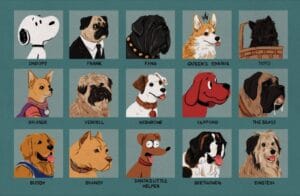Why You May Need a Dog Breed Guide
202 dog breeds are acknowledged by American Kennel Club but, there are over 340 across the world. Each is distinct in parameters like appearance, size and personality even when they are coming from same species. In a breed guide, expected physical traits, temperament and movement are documented in written form as breed standard.
For instance, it is such standard that tells us the traits which make Cocker Spaniels, Cocker Spaniels and Springer Spaniels, Springer Spaniels. With all the hundreds of dog types, you need not to be a vet or an expert in animals to know the different types and their distinctive attributes. A breed guide is there to help you with the knowledge of any dog you seek.
It doesn’t matter if you are intending to acquire your first canine or your house is already teeming with them, it is necessary to research well about the pet you are getting. The more information you have about a new animal, the better it is for you the owner. Since the pet will be dependent on you to have its needs met, shouldn’t you acquaint yourself with the nature of this pet and what its needs might be? You can visit here for more information on dogs.
What Is a Dog’s Breed Anyway?
Humans have bred dogs from historic times to present. Those who started the art of breeding dogs began with wolves. Wolves were made into domestic dogs. From the onset, breeders bred dogs on purpose to perform different tasks. Hunting, herding, and guarding are believed to be some of the foremost jobs these animals that ended up being called man’s best friend performed.
For millennia, people bred canines to meet mental and physical traits demanded by the type of work they were meant to do. Sleek Greyhounds were bred to go after fast-moving prey, while the huge mastiff was bred for guard and warrior purposes. These two are examples of ancient dog breeding for specific assignments.
As human sophistication grew, so did canines too. When they spread out to different locations, their animals went with them. With time, specific breeds emerged, custom-suited to fit local circumstances and needs. For instance, the Greyhound became the source from where the massive Wolfhound and elegant Italian Greyhound emerged. Even though all three have their distinctive family semblance, you can never mistake one for the other.
Below are some present dog breeds [you can go here for more ]:
- Coonhound
- Chinese Shar-Pei
- American Foxhound
- Barbet
- Appenzeller Sennenhund
- Finnish Lapphund
- Australian Shepherd
- Field Spaniel
- Azawakh
- French Bulldog
- Basenji
- Chinese Crested
- Bergamasco Sheepdog
- Australian Kelpie
- Chinook
- Deutscher Wachtelhund
- Chow Chow
- Dalmatian
- Eurasier
- Doberman Pinscher
- German Pinscher
- Dogo Argentino
Ancestors of Present Breeds
Scientists are in agreement about nine ancient breeds that still exist till today. These nine still have the most genetic similarities with wild wolves. With them, we can peep into how breeding of canines developed. The nine are these:
- Alaskan Malamute
- Afghan Hound
- Basenji
- Akita
- Chow Chow
- Chinese Shar Pei
- Siberian Husky
- Samoyed
- Saluki
Historians of canines have traced the origins of most of the present types to the above ancient ones –or extinct ones that birthed the ones listed. Apart from these, there is a complete primitive subset that is made up of aboriginal breeds related to various parts of our world.
Dog Groupings
So, how do we differentiate breeds from species? Canine experts will tell you that breeds breed true. What this means is that when you breed a pure Irish Setter with another pure Irish Setter, you will always get offspring that are readily identifiable as pure Irish Setters. Different kennel clubs have their own identification. Below are some of the identification that you will find with the American, United and FCI kennel clubs
AKC
- Sporting Group
- Hound Group
- Working Group
- Terrier Group
- Toy Group
- Herding Group
- Non-Sporting Group
- Miscellaneous Class
UKC
- Guardian
- Scenthound
- Pariah and Sighthound
- Gun Dogs
- Northern
- Herding Dog
- Terrier
- Companion
FCI
- Cattle and Sheep dogs
- Schnauzer and Pinscher
- Dachshunds
- Terriers
- Primitive Types and Spitz
- Scenthounds and similar types
- Setters and Pointers
- Flushing, Retriever and Water dogs
- Toy and Companion
- Sighthounds
KC (United Kingdom)
- Hound
- Gundog
- Pastoral
- Toy
- Terrier
- Working
- Utility
The above are groupings according to various kennel clubs. These groups have subgroups where each has assigned to it a number specific to it. These numbers are important, considering that the same breed might be known by various names in different countries. Professionals can guide you on recommended dog breeds depending on what you want one for.
In Conclusion
These classifications are done using various parameters. We won’t be able to get into all the parameters used for classification. There is no canine type that can be said to be the best, much would depend on what purpose you intend to put the animal to.
You should also factor in the fact that different types have their peculiar challenges which includes peculiar health needs. So, while you seek for a guide, you will need one that details the pros and cons that come with each particular one.
